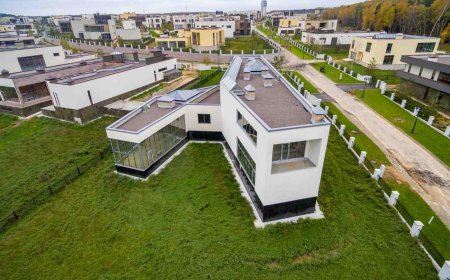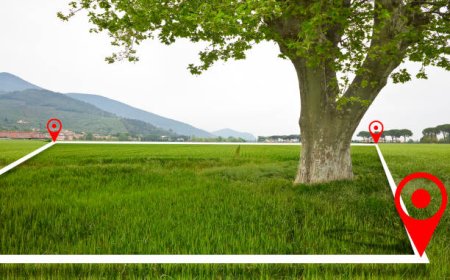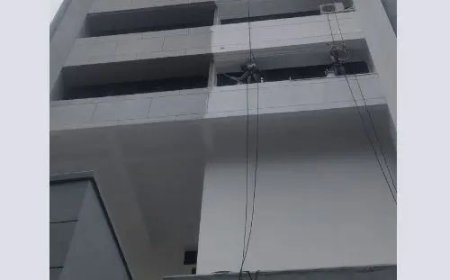Outsmarting This Gorgeous Yet Leathal Trail Today: Annapurna
Conquer the Annapurna Circuit and experience high passes, prayer flags, yak trails, and the soul of the Himalayas.

The Annapurna Circuit is a paradox overwhelmingly lovely, however brutally difficult. It lures you in with towering peaks, sacred temples, and misty forests, but in case you come unprepared, it can take you and bite you up and spit you out. This is not a hike for day trippers taking selfies. Its a passage through excessive altitudes, unpredictable weather, and an internal battlefield, where nature does not blink. One mistake, bad selection, or overlooked detail can flip a dream hike right into a grueling survival story.
But right heres the good information: Annapurna may be tamed no longer by using brute force, however, with approach, foresight, and recognition. You dont have to be a superb athlete to outsmart this Himalayan monster. You simply have to plan clever, hike smart, and know whats coming earlier than it blindsides you. The ones who make it on that path arent the strongest; theyre the maximum adaptable. This guide dismantles how to outmaneuver Annapurnas deadliest traps, such as weather whiplash, altitude threats, packing gaffes, and trail confusion. Well guide you through six crucial strategies that distinguish the triumphant from the shattered. For newcomers inspired by dreams of Thorong La and for veteran trekkers seeking redemption, these tactics will give you a genuine advantage.
Annapurna demands intelligence, not just endurance. So if you want to come out of that drop-dead but trouble-laden trail unscathed, heres how. Let us whip the mountain at its contest, and that before it whips you.
Learn the art of a slow ascent to avoid altitude traps.
The biggest mistake trekkers make? Going too high, too fast. The beauty of Annapurna conceals a serious threat: altitude sickness. You need to hike up slowly, particularly at 2,500 meters and above. Take a maximum gain of 500 meters a day and include acclimatization days, especially in Manang. Symptoms like headaches and nausea are your bodys way of waving this red flag at you. Ignore it, and you may experience pulmonary or cerebral edema. If you need it, you can take Diamox; you should hydrate like you never have before, and never pass up a chance to rest. Outsmart the altitudedont race it. The further up you move, the more patience you have to have. In this, the fastest way to fail is in a hurry.
Read the Weather Like a Mountain Native
The skies of Annapurna go foul for no obvious reason. Even clear mornings can turn snowy by afternoon, particularly near Thorong La Pass. Constantly begin early 6 a.m. is right and be there using late afternoon. Check with dependent on climate apps (Windy, Mountain-Forecast) at the same time as your smartphone still has a signal. Convey waterproofs out even though its no longer raining. Even at high altitudes, cold not only cuts through gear but can also cut through morale in minutes. Plan for four seasons daily. Knowing when to hold, fold, pause, or descend isnt cowardice its smarts. Outsmarting Annapurna is about respecting its moods. And up here on the mountain, the mountain is always right.
Pack Like a Minimalist Warrior, Not a Tourist. Dont overdo it.
Backpacking too much is the fastest way to become tired and slow. Underpacking leaves you vulnerable. Outsmart this balance. The essential matters, which include moisture-wicking base layers, down jacket, shell layer, gloves, warm hat, headlamp, blister package, and water purification. Leave in the back of non-essentials: There could be no room in your bag for jeans, heavy toiletries, or surplus electronics. On the road, your bag should not weigh more than 10- 12 kg time total. If you plan to hire a porter, still stick to the essentials-though porters are fit, they are not superhuman. Annapurna favors those trekkers who can travel light, quickly, and wisely. An unnecessary item is a burden, in every sense of the word. Pack sharp. Move free.
Learn the Route More Than Your GPS Device
Maps and GPS can be wrong, but knowledge is never wrong. Review your path for the day before departure each morning. Learn about villages ahead, water refill points, side trails, and potential trouble spots. Download offline maps like Maps. Me or Gaia GPS. Inquire about trail updates from locals and other trekkers landslides or snow can change routes overnight. Dont simply rally behind the masses; they are known to take shortcuts or simply go the wrong way. When the signs drop away, there is nothing but intuition and foreknowledge to turn to. Annapurna challenges your route-finding, not just your legs. To outsmart the trail, you must be mentally on top of the trail, always.
Finally, Eat Smart to Keep Up Your Power and Heat.
Trekking at high altitude burns 3,000-5,000 calories a day. Your body requires fuel it doesnt have to be fancy meals, but reliable, high-octane food. Eat dal bhat for stamina (carbs + protein) and add in eggs, potatoes, garlic soup, or oats when you can manage. Bringg alongside path snacks: nuts, chocolate, strength bars. Simply as at sea level, live away from alcohol and caffeine at better elevationsthey may be dehydrating. Rsum: Dont forget to eat, even if altitude suppresses your appetite. Quaff three to four liters per day, and pack electrolyte tabs, too. Hunger and fatigue cloud judgment. Outwit weakness with fuel for your engine and fluids flowing. Strong minds need strong bodies.
Prepare Your Mind for Isolation, Discomfort, a nd Fear.
The trail can be a lonely place, especially at higher elevations where cellphones disappear and snow mutes the world. Your biggest asset or the worst part of all? Train the mind by training in harsh conditions: cold, wet, early mornings, long, lonely hikes. Before you hit the trails, practice meditation, breathing techniques, or journaling. Anticipate and construct tools to push through the fear of failure, the weather, or your limits. Annapurna doesnt just test your lungs it tests your character. The cleverest trekkers are the winners only because they have prepared for the mental war well in advance of their boots hitting dirt.
How to teach for the Annapurna Circuit trek?
Getting ready for the Annapurna Circuit trek takes physical, logistical, and intellectual guidance. Start training at least 68 weeks before the tour with steady aerobic inclusive of hiking, running, and stair to accumulate persistence. Concentrate on the strength of the legs and the stability of the core. Bring layered clothing to house a number of climates, and make certain your boots are well-worn. Agenda acclimatization rest days, specifically above 3,000 metres. Achieve allows (ACAP & TIMS), purchase altitude travel insurance, and teach yourself about altitude illness. The mind can be just as powerful as the body.
Is the Thorong Los Angeles bypass risky?
Yes, Thorong La bypass (five,416 m) is the hardest and maximum dangerous part of the Annapurna Circuit. It is bodily stressful, because of the high altitude, steep ascent, and severe climate. Snow, wind, and sudden storms can present unsafe situations, specifically during the wintry weather. Altitude illness is a real concern because the oxygen content is so low. With acclimatization, preparation, and timing (crossing it, typically, earlier than nine a.m.), its practicable for most trekkers.
How unstable is the Annapurna Circuit trek?
For the most part, the Annapurna Circuit trek is a safe and exciting enjoy for any well-organized hiker; however, its no longer without dangers. The largest hazard is altitude contamination, especially above 500 meters. The direction also comes with steep sections, landslide areas, and modifications in weather situations, specifically near Thorong los angeles skip. But the direction is nicely trodden with excellent teahouse centers and plenty of different trekkers. With acclimatization, appropriate gear, pacing, and some warning, the dangers may be appreciably decreased.
Is that the toughest trek in Nepal?
The Annapurna I day trip (not to be combined with Annapurna Base Camp trek is through some distance considered to be the most dangerous trek in Nepal. Annapurna I also has the highest fatality rate of the 8,000-meter peaks, a large part of the reason why it is known as The Silent Killer. For the treks, wed start with Upper Dolpo Trek and Dhaulagiri Circuit Trek since these are all very remote and hard, both physically and for logistic, therefore among the most risky treks because of isolation and lack of rescue.

































